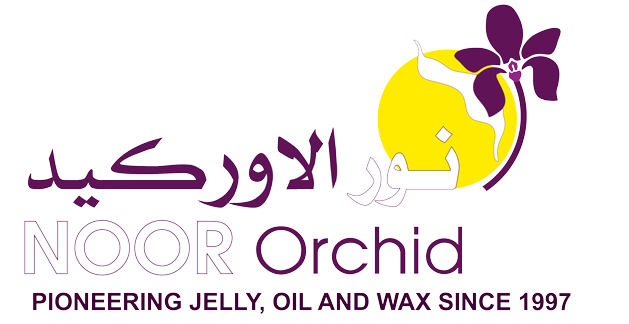Certified and approved quality
A professional team of experts in the pharmaceutical field control all the procedures undertaken to ensure the identity and purity of products. Qc major measurements include penetration, absorption, Color and melting point. Navid Noor QC team guarantees clients and final buyers a safe and effective product.
In addition to the basic requirements such as 100% tractability of batches, comprehensive quality control in terms of pharmacopoeia monographs, and many other details, we have laid down the highest standards for the filling of petroleum jellies, in particular. The drums are filled in new installations in line with stringent hygiene requirements and to some extent under a protective atmosphere with filtered air in a isolated system. This is combined with production in an isolated tank and pipeline systems, ensures that we reach a standard level which has been given approval certificate by Iran Food and Drug Organisation.
It goes without saying that our company maintains an integrated management system. We are certified in accordance with ISO 9001 (quality), ISO 14001 (environment) and OHSAS 18001 (occupational safety and health).
How to keep petroleum jelly drum stored
To store petroleum jelly drums properly, follow these steps:
1. Clean the storage area: Ensure the storage area is clean and free from dust, debris, and moisture.
2. Temperature control: Store the petroleum jelly drums in a cool, dry, and well-ventilated area to prevent overheating or freezing.
3. Avoid direct sunlight: Keep the drums away from direct sunlight as prolonged exposure to UV rays can degrade the product.
4. Secure lids and seals: Ensure the lids and seals of the drums are tightly closed to prevent any contaminants from entering.
5. Elevated storage: If possible, store the drums on pallets or raised platforms to protect them from potential floor dampness.
6. Regular inspections: Periodically inspect the drums for any signs of damage, leakage, or contamination.
By following these guidelines, you can help maintain the quality and longevity of the petroleum jelly stored in the drums.
How to keep mineral oil drums stored
To properly store mineral oil drums, consider the following steps:
1. Clean and prepare the storage area: Ensure the storage space is clean, dry, and free from any potential contaminants that could affect the mineral oil’s quality.
2. Temperature and ventilation: Store the mineral oil drums in a cool and well-ventilated area to prevent overheating and maintain product stability.
3. Protection from direct sunlight: Keep the drums away from direct sunlight, as exposure to UV rays can lead to degradation of the mineral oil.
4. Secure lids and seals: Ensure that the lids and seals of the drums are tightly closed to prevent any leakage or contamination.
5. Elevated storage: Whenever possible, store the drums on pallets or raised platforms to protect them from potential floor dampness.
6. Regular inspections: Periodically check the drums for signs of damage, rust, or leaks, and address any issues promptly.
7. Labeling: Clearly label the drums with the type of mineral oil and its expiration date for easy identification.
By adhering to these storage guidelines, you can help extend the shelf life and maintain the quality of the mineral oil in the drums.
How keep cable jellies safe and stored.
To properly store mineral oil drums, consider the following steps:
1. Clean and prepare the storage area: Ensure the storage space is clean, dry, and free from any potential contaminants that could affect the mineral oil’s quality.
2. Temperature and ventilation: Store the mineral oil drums in a cool and well-ventilated area to prevent overheating and maintain product stability.
3. Protection from direct sunlight: Keep the drums away from direct sunlight, as exposure to UV rays can lead to degradation of the mineral oil.
4. Secure lids and seals: Ensure that the lids and seals of the drums are tightly closed to prevent any leakage or contamination.
5. Elevated storage: Whenever possible, store the drums on pallets or raised platforms to protect them from potential floor dampness.
6. Regular inspections: Periodically check the drums for signs of damage, rust, or leaks, and address any issues promptly.
7. Labeling: Clearly label the drums with the type of mineral oil and its expiration date for easy identification.
By adhering to these storage guidelines, you can help extend the shelf life and maintain the quality of the mineral oil in the drums.
How keep cable jellies safe and stored.
To store cable jelly compound properly, follow these guidelines:
1. Temperature and humidity: Store the cable jelly compound in a cool and dry environment, away from extreme temperatures and humidity. High temperatures can cause the compound to soften or melt, while excessive moisture can lead to contamination.
2. Avoid direct sunlight: Keep the cable jelly compound away from direct sunlight, as UV rays can degrade the material and reduce its effectiveness.
3. Secure containers: Ensure that the containers holding the cable jelly compound are tightly sealed to prevent any leakage or exposure to air.
4. Storage area cleanliness: Keep the storage area clean and free from dust, dirt, and other contaminants that could affect the quality of the compound.
5. Shelf life monitoring: Check the expiration date on the product label and use the oldest stock first to prevent using expired cable jelly compound.
6. Regular inspections: Periodically inspect the containers for any signs of damage or deterioration, and address any issues promptly.
7. Labeling: Clearly label the containers with the type of cable jelly compound and its expiration date for easy identification.
By following these storage recommendations, you can ensure the cable jelly compound remains in good condition and maintains its properties for its intended use.






